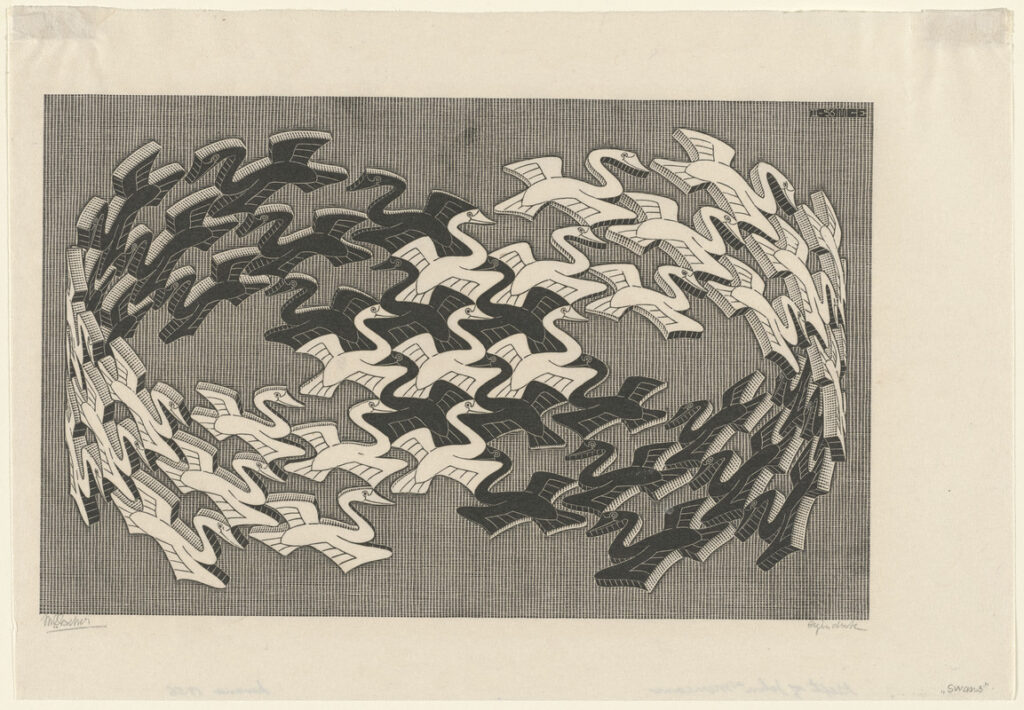
"A big hit with hippies and 1960s college students, writes Heavy Music Artwork, his mind-bending prints became associated with "questioning accepted views of normal experience and testing the limits of perception with hallucinogenic drugs." While he appreciated his cult following, Escher "did not encourage their mystical interpretations of his images." Replying to one enthusiastic fan of his print, who claimed to see in it an image of reincarnation, Escher replied, "Madame, if that's the way you see it, so be it.""
"Rather than illustrate higher states of consciousness or metaphysical entities, Bruno Ernst writes in The Magic Mirror of M.C. Escher, the artist intended to create practical, "pictorial representation of intellectual understanding." Illustrations, that is, of philosophical and scientific thought experiments. The son of a civil engineer, Escher began his studies in architecture before moving to drawing and printmaking. The challenge of creating built environments-even seemingly impossible ones-always seemed to occupy his mind."
M.C. Escher’s prints appeared in films, television, video games, and album covers and became popular with 1960s counterculture. His mind-bending imagery attracted interpretations linking the work to altered perception and hallucinogenic experience, but Escher did not endorse mystical readings of his images. He intended his prints as pictorial representations of intellectual understanding and as illustrations of philosophical and scientific thought experiments. The son of a civil engineer, Escher trained in architecture before turning to drawing and printmaking. The intellectual challenge of designing built, sometimes seemingly impossible, environments remained a persistent focus alongside themes drawn from the natural world.
Read at Open Culture
Unable to calculate read time
Collection
[
|
...
]